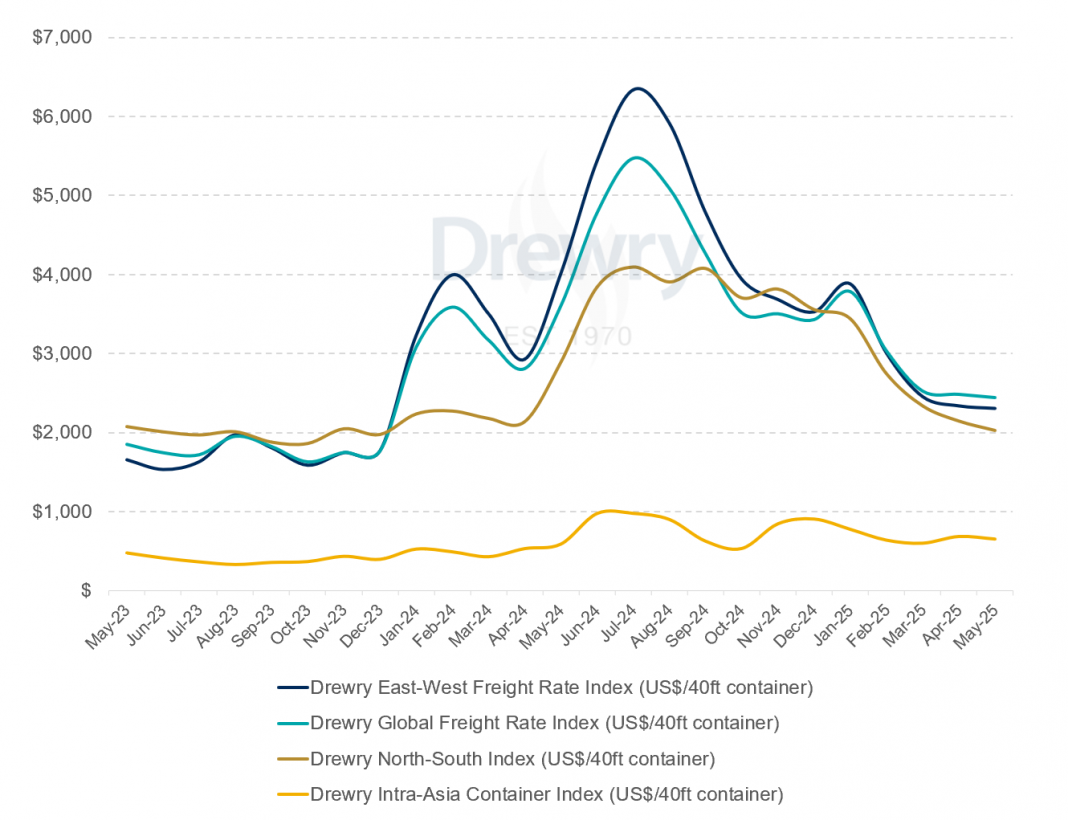More than five years after the unprecedented disruptions of the Covid-19 pandemic, a new analysis by Drewry reveals that one significant challenge for the global shipping industry persists: extreme freight rate volatility. While intra-Asia routes show remarkable stability, East-West routes, particularly Transpacific lanes, are experiencing acute and damaging fluctuations, posing substantial risks for shippers worldwide.
The Drewry analysis highlights that persistent rate volatility stems from a complex interplay of factors, including ongoing geopolitical disruptions such, as the Red Sea attacks and heightened security risks in regions like Iran and the Gulf, along with shifting supply and demand dynamics, and intermittent tariff changes that trigger sudden volume surges and pauses. These elements collectively contribute to an unpredictable pricing environment.
Drewry noted that transpacific spot rates, for instance, have demonstrated remarkable instability over the past six months. Data shows that rates from Shanghai to Los Angeles halved between January and March 2025, only to double again from March to June.
This dramatic swing underscores the inherent risks for businesses reliant on short, spot market agreements for ocean transport. The Drewry East-West Freight Rate Index, a weighted average of major East-West routes, registered a standard deviation of approximately $1,400 per 40ft container in the two years since May 2023, illustrating the scale of this unpredictability.
For manufacturers, retailers, exporters, and importers operating on spot contracts, this volatility translates directly into significant business risks:
Unpredictable Landed Costs: Importers face unexpected increases or decreases in the total cost of their products.
Eroded Export Margins: Exporters may see their profit margins vanish due to sudden freight cost spikes.
Reduced Competitiveness: Companies may find their exports less competitive in key international markets.
Executive Accountability: Logistics executives are increasingly held responsible for unforeseen cost overruns.
Disproportionate Impact on Low-Value Goods: An additional $2,000 in freight cost per container can completely eliminate the margin on low-value products, making their shipment economically unviable.
Even larger shippers with annual contracts, typically more insulated from immediate cost changes, are increasingly experiencing the impact through more frequent and unexpected surcharges, such as those implemented for Red Sea diversions since late 2023.
The findings underscore a critical need for shippers to implement robust strategies to mitigate these ongoing cost risks, particularly for goods transported on volatile East-West trade lanes.




